Scientist of the Day - Anselmus de Boodt
Anselmus Boetius de Boodt, a Flemish physician and naturalist, died June 21, 1632, at the age of perhaps 80. De Boodt was not only the personal physician of the Holy Roman Emperor Rudolf II, he was also the principal curator of Rudolf’s Kunstkammer in Prague, which was one of the great cabinets of curiosities in all of Europe. De Boodt's special interest was minerals, and in 1609, he published one of the first mineralogical treatises of the late Renaissance, Gemmarum et lapidum historia (History of Gems and Stones). At the time, fossils were considered to be stones, figured stones, and so many of the woodcuts in Boodt's book illustrate fossils, such as glossopetrae or tonguestones (first image), and cerauniae or thunderstones (which we now recognize as prehistoric human tools; second image), as well as a hefty chunk of columnar basalt (third image).
One might expect that the illustrations in a book about a specific collection would show the objects in that collection. The lesson for today is that this was rarely the case before the late 17th century. Rudolf II no doubt had a collection of tonguestones, and a piece of basalt. But de Boodt simply copied his images from those in Conrad Gesner's De omni rerum fossilium (On all kinds of fossil things), published in 1565. Gesner's tonguestones, and his basalt, are depicted above (fourth and fifth images). Such blatant borrowing of images was very common in museum books in the Renaissance and early modern period.
Apparently a very few copies of de Boodt’s 1609 treatise contain a portrait of the author by Aegidius Sadeler. Our copy does not, but since it is such a splendid portrait, we show you the one in the Wellcome collection in London (sixth image).
Dr. William B. Ashworth, Jr., Consultant for the History of Science, Linda Hall Library and Associate Professor, Department of History, University of Missouri-Kansas City. Comments or corrections are welcome; please direct to ashworthw@umkc.edu.

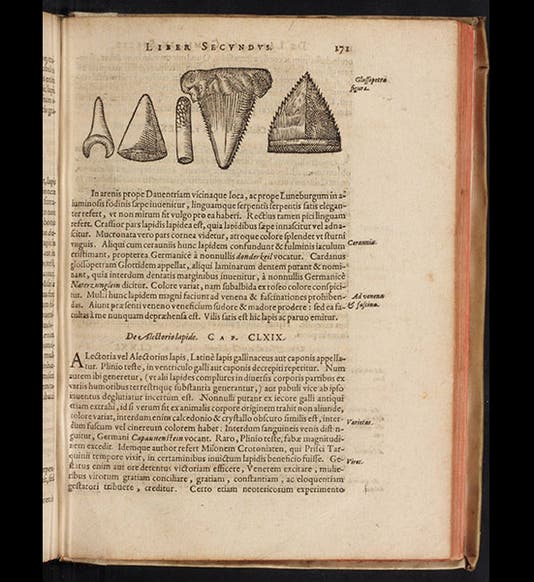
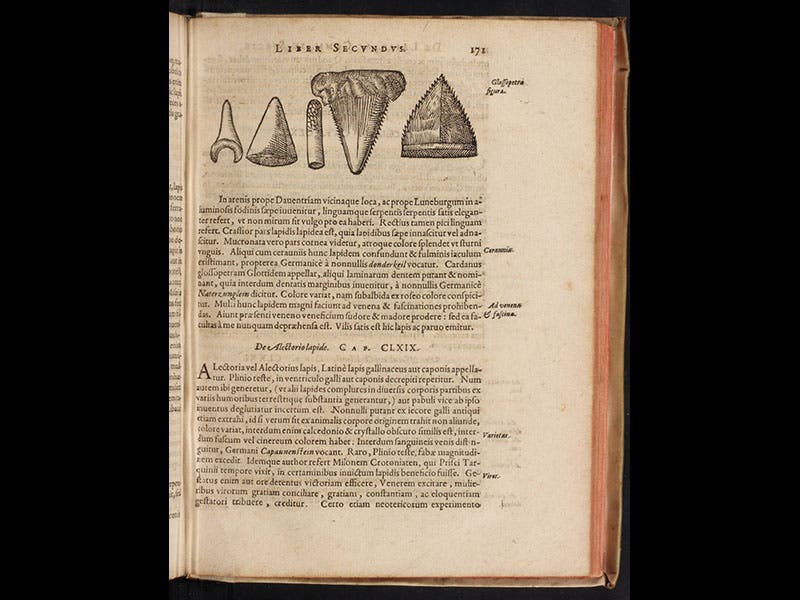

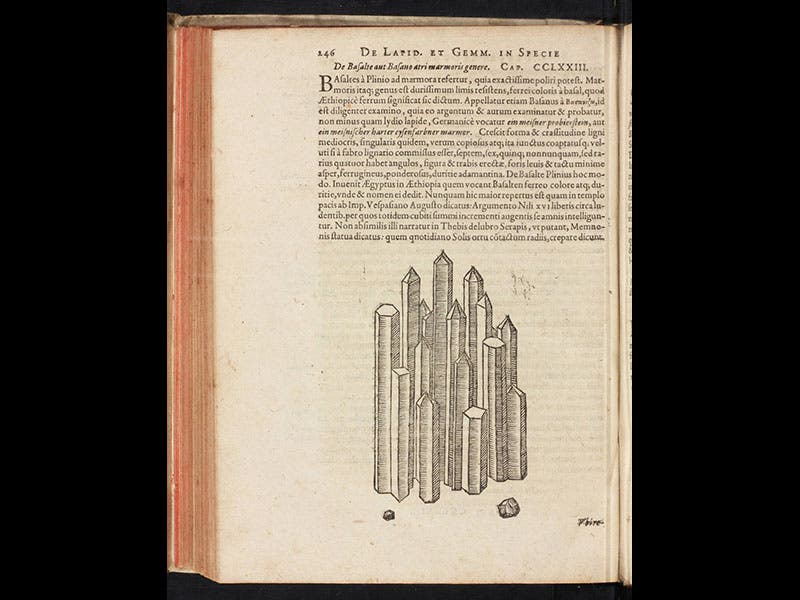

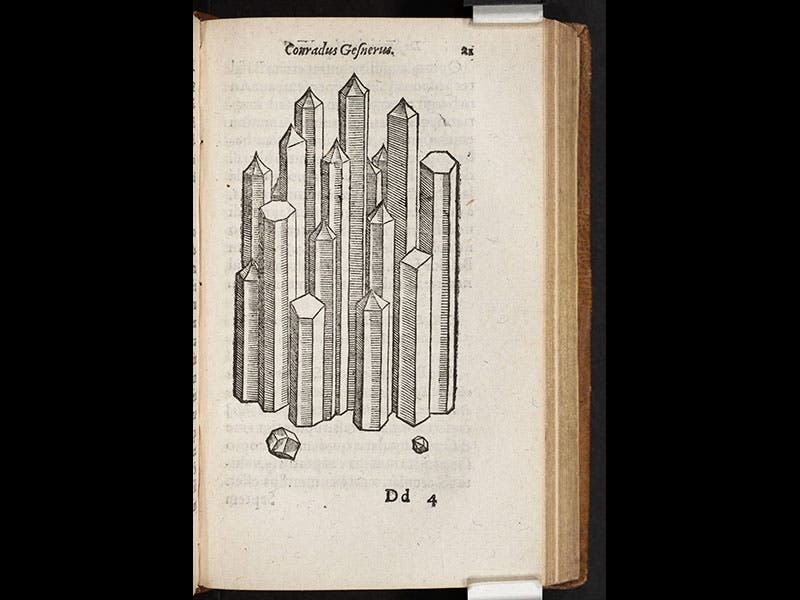
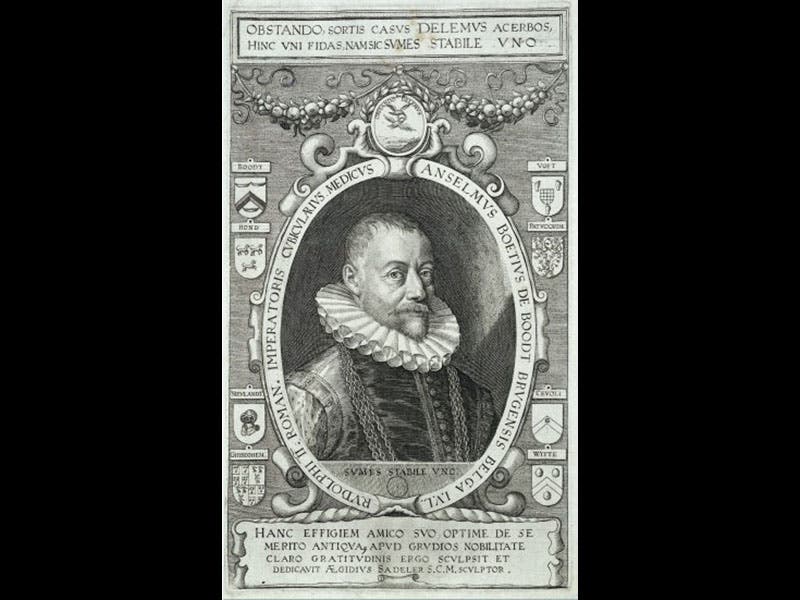


![Using an astrolabe to measure the depth of a well, woodcut in Elucidatio fabricae vsusq[ue] astrolabii, by Johannes Stöffler, 1513 (Linda Hall Library)](https://assets-us-01.kc-usercontent.com:443/9dd25524-761a-000d-d79f-86a5086d4774/a998eb50-55d2-4a88-ace2-a50aa5fa86e7/Stoffler%201.jpg?w=210&h=210&auto=format&fit=crop)

